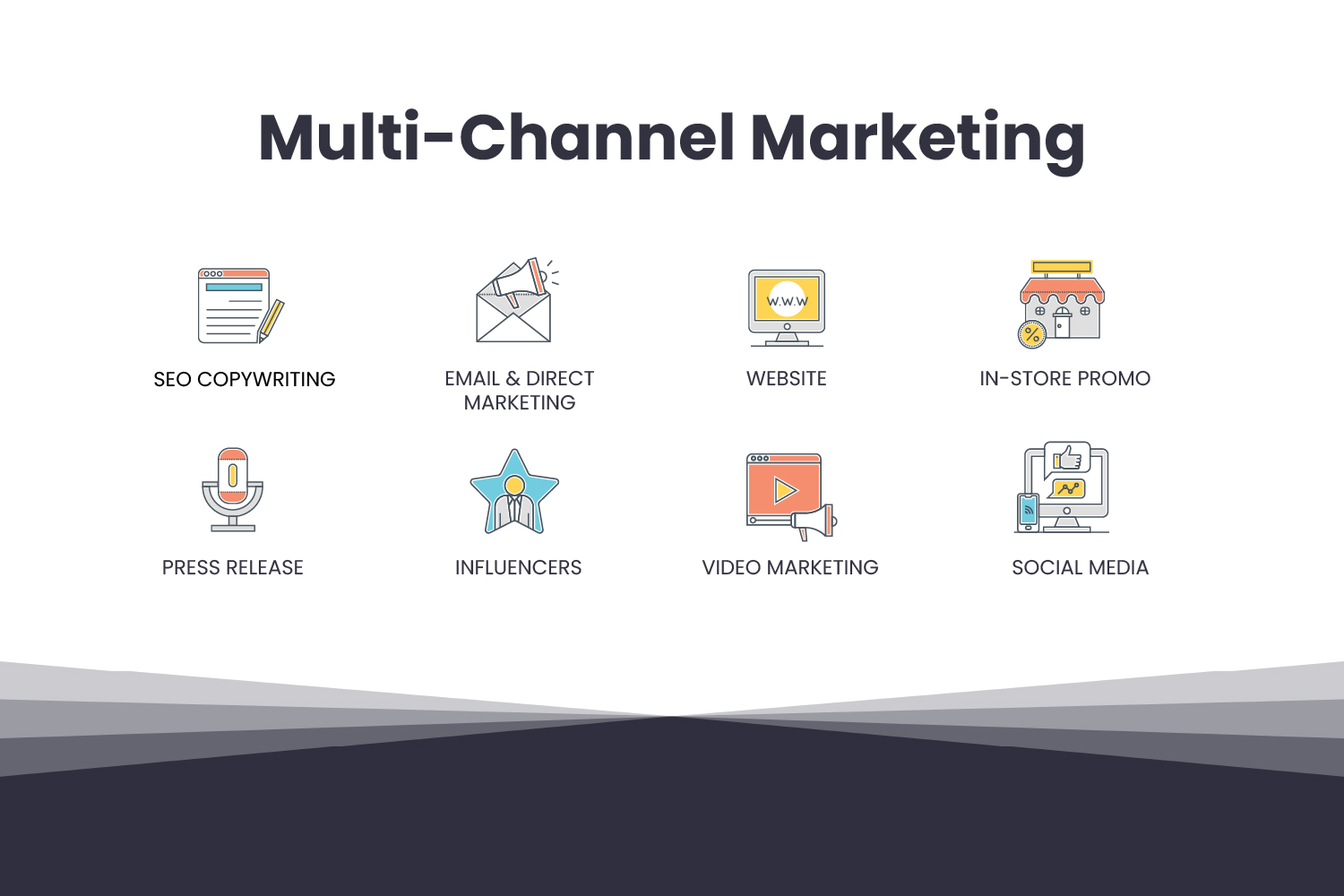In today’s fast-paced digital landscape, reaching your target audience through various marketing channels is an important factor in the success of your live events and trade shows. An omni-channel marketing strategy is a powerful approach that can boost your event’s impact and increase attendance, engagement, and ROI.
In this chapter, we’ll explore the ins and outs of creating an effective omni-channel marketing strategy for your live events and trade shows.
Understanding Multi-Channel Marketing
Multi-channel marketing integrates various marketing channels to create a seamless and unified experience for your audience. It acknowledges that consumers interact with brands across multiple touchpoints, and it aims to ensure consistency and relevance across all of them.

Why Multi-Channel Marketing for Live Events and Trade Shows is Important
Increased Visibility
By utilising multiple channels such as social media, email, and traditional advertising, it ensures that your target audience doesn’t miss out.
Enhanced Engagement
Omni-channel marketing enables you to engage with your audience before, during, and after the event, fostering a culture of feedback and community.
Data-Driven Decisions
By collecting and analysing data from various channels, you gain valuable insights into your audience’s behavior and preferences which enables data-driven decisions.
Improved Personalisation
Omni-channel marketing facilitates personalisation, ensuring that your messages resonate with each attendee on an individual level.


Crafting Your Multi-Channel Strategy
1. Understanding Your Audience
Conduct thorough research to understand your target audience. Who are the types of consumers and people are you talking to? What are their needs and pain points? To guide your marketing efforts, create customer personas and analyse their preferences, interests, and behavior.

2. Pre-Event Planning
Set clear marketing goals and establish measurable objectives. Here’s an example:
Goal: Increase in sales
Objective: Get 800 new leads throughout the two-day event.
Then, based on your audience’s preferences and your budget, choose the right mix of marketing channels and materials. Develop compelling and consistent content across all channels and materials—it should reflect your event’s value proposition. Remember to implement data collection and analytics tools such as Google Analytics or HubSpot to measure the success of your strategy.


3. The Multi-Channel Marketing Mix
Online channels
Utilise social media marketing and email campaigns. Optimising your event website for search engines is also a necessary measure to maximise your online presence.
Offline channels
Create eye-catching print materials such as posters and flyers.
Mobile channels
The easiest way to maximise this channel is to ensure that your website is mobile-friendly. You can also utilise SMS marketing to update your existing customer database about your event and live show participation.


4. Integration and Consistency
Maintain a consistent message and branding across all channels. Coordinate your marketing efforts to provide a seamless customer journey. This ensures that your audience recognises your event and messaging, no matter where they encounter it.
5. Engagement and Interaction
For the pre-event, build anticipation through teasers, countdowns, and interactive content online. During the event, engage with your audience in real-time through live updates, contests, and polls. Then post-event, send out surveys to gather feedback and suggestions for improvement. You can also offer exclusive content or discounts to keep attendees engaged and interested in future events. Remember to keep your audience engaged at every stage and touchpoint.

6. Measuring Success
Establish key performance indicators (KPIs) to track your strategy’s effectiveness. Analyse data and results to make adjustments to marketing efforts, budget, and other factors. The data you get after every event will help you make sound improvements for future events.
Common Challenges in Implementing Omni-Channel Marketing
Implementing an omni-channel marketing strategy can be highly effective, but it’s not without its challenges. Here are some common obstacles and strategies to overcome them:
Lack of Data Integration
Challenge: Combining data from various channels can be complex, and many organisations struggle to create a single view of the customer.
Strategy: Invest in customer relationship management (CRM) systems and marketing automation tools that can integrate data from multiple channels. Ensure data consistency and accuracy.


Channel Proliferation
Challenge: The increasing number of marketing channels can be overwhelming. It’s difficult to determine which channels will be most effective for your target audience.
Strategy: Conduct audience research to understand where your target customers spend their time. Start with a few key channels and expand gradually based on results.
Consistency in Branding and Messaging
Challenge: Maintaining a consistent message and brand identity across all channels can be challenging, leading to a disjointed customer experience.
Strategy: Develop clear brand guidelines and messaging strategies that can be applied across all channels. Use automation tools to ensure uniformity in content and branding.


Resource Allocation
Challenge: Allocating resources effectively across various channels can be a daunting task, especially for smaller businesses with limited budgets.
Strategy: Prioritise channels that align best with your audience and goals. Invest in tools that can help streamline tasks and reduce manual effort, like marketing automation platforms.
Data Security and Privacy Concerns
Challenge: With the collection of customer data, businesses must address data security and data privacy concerns, such as GDPR and CCPA compliance.
Strategy: Be transparent with customers about how their data will be used. Implement stringent data security protocols, and ensure compliance with relevant data protection regulations.
Technological Integration
Challenge: Integrating various marketing technologies and tools can be complex and time-consuming.
Strategy: Invest in robust marketing technology stacks that support integration. Consider working with experienced IT professionals to ensure seamless integration.

Organisational Silos
Challenge: If you have a large organisation, departments may work in isolation which leads to fragmented strategies.
Strategy: Foster cross-departmental collaboration and communication. Break down silos by encouraging teams to share data and insights.
Measuring ROI
Challenge: Measuring the return on investment (ROI) for omni-channel marketing can be tricky, as it involves tracking various channels and interactions.
Strategy: Define clear KPIs and metrics to measure the impact of each channel. Invest in analytics tools that can provide insights into how different channels contribute to your objectives.
Customer Experience Gaps
Challenge: Inconsistent customer experiences across channels can lead to confusion and frustration among customers.
Strategy: Continuously monitor and optimise the customer journey. Use feedback and data to identify areas where the experience can be improved and made more seamless.


Adapting to Changing Consumer Behavior
Challenge: Consumer behavior and preferences are constantly evolving, making it challenging to keep up.
Strategy: Stay updated on industry trends and consumer behavior through market research. Be agile and ready to adapt your strategy as needed.
In the competitive world of live events and trade shows, an omni-channel marketing strategy is your ticket to success. By crafting a well-thought-out plan that leverages various channels, you can increase visibility, engage your audience, and drive measurable results. Remember, it’s not just about reaching your audience; it’s about delivering a seamless and memorable experience that keeps them coming back for more.
